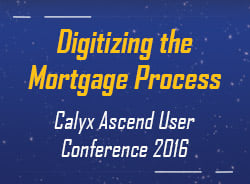Texas Capital Bank Implements DocMagic’s Total eClose™ Solution for eWarehouse Lending
 One of the nation’s largest lenders completes its first eClosing as an eWarehouse lender, using DocMagic’s Total eClose™ solution for eWarehouse lending
One of the nation’s largest lenders completes its first eClosing as an eWarehouse lender, using DocMagic’s Total eClose™ solution for eWarehouse lending
TORRANCE, Calif., April 21, 2017—DocMagic, Inc., the premier provider of fully-compliant loan document preparation, regulatory compliance and comprehensive eMortgage services, announced that Texas Capital Bank has implemented its Total eClose™ solution. This implementation enables the bank to function as an eWarehouse lender. They can now accept and fund eNotes from its lender customers that want to drastically speed up the process of closing and selling loans.
Total eClose™, DocMagic’s eClosing technology, is a single-source, centralized platform that provides all necessary components to enable a completely paperless digital closing. Texas Capital Bank is a leading provider of warehouse credit facilities to fund mortgage origination and acquisition.
Texas Capital Bank recently funded its first eNote with a key lender client using DocMagic’s eMortgage technology suite. The eNote was instantly delivered to the bank, registered with MERS, and securely stored in DocMagic’s eVault. They completed the entire transaction electronically and transferred the eNote to Fannie Mae in minutes, rather than days.
“DocMagic’s eClosing and eMortgage solutions have provided Texas Capital Bank with the tools necessary to incorporate the funding of eNotes into our everyday operational procedures,” said Donnie Martin, Executive Vice President at Texas Capital Bank. “We believe the digital mortgage revolution and acceptance of eNotes will continue to grow. We are pleased to have partnered with DocMagic to build out the infrastructure needed to support the eNote funding process at the bank, which in turn supports the trend towards digital mortgages.”
“It’s very rewarding to support Texas Capital Bank as they move forward and break ground as an eWarehouse leader,” said Dominic Iannitti, president and CEO of DocMagic. “In this industry, it’s forward-thinking, tech-savvy organizations like this that thrive, set the pace and reach their goals. They understand the fundamental role that advanced technology plays in their—and the industry’s—progress. We look forward to collaborating further as we help drive true end-to-end eMortgage adoption.”
The Consumer Financial Protection Bureau (CFPB) has repeatedly encouraged lenders to implement eClosing technology and operational processes to make obtaining a home loan as easy as possible for borrowers.

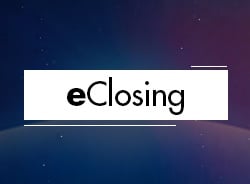 PROGRESS in Lending Association has named the work done by DocMagic a top innovation. As the mortgage industry slowly embraces the Digital Mortgage, DocMagic launched what was dubbed its “Total eClosing solution,” which enables a comprehensive, true 100% paperless eClosing that automates the entire process — from start to finish. Looking back, DocMagic was brought to the forefront of eClosing technology awareness with its participation in the CFPB’s eClosing pilot in 2014. This vendor was 1 of only 12 firms that was invited by the CFPB to participate. If the industry is going to go digital it will need vendors like DocMagic to lead the way. The Total eClose solution includes the seamless incorporation of its eSignature-enabled SMART Documents, a nationwide eNotary network, MERS eRegistry access, eWarehousing, eNotes, a secure eVault, and secure investor eDelivery — all in a single, comprehensive eClosing platform and completely TRID-compliant. There is absolutely no paper involved at any point, at any time.
PROGRESS in Lending Association has named the work done by DocMagic a top innovation. As the mortgage industry slowly embraces the Digital Mortgage, DocMagic launched what was dubbed its “Total eClosing solution,” which enables a comprehensive, true 100% paperless eClosing that automates the entire process — from start to finish. Looking back, DocMagic was brought to the forefront of eClosing technology awareness with its participation in the CFPB’s eClosing pilot in 2014. This vendor was 1 of only 12 firms that was invited by the CFPB to participate. If the industry is going to go digital it will need vendors like DocMagic to lead the way. The Total eClose solution includes the seamless incorporation of its eSignature-enabled SMART Documents, a nationwide eNotary network, MERS eRegistry access, eWarehousing, eNotes, a secure eVault, and secure investor eDelivery — all in a single, comprehensive eClosing platform and completely TRID-compliant. There is absolutely no paper involved at any point, at any time.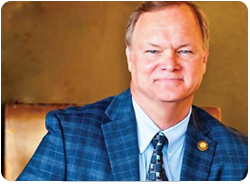 By Tim Anderson
By Tim Anderson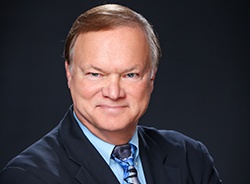 By Tim Anderson
By Tim Anderson By Brian A. Lee
By Brian A. Lee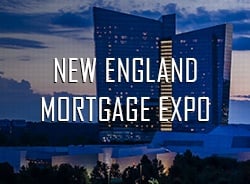 Join the eClosing evolution!
Join the eClosing evolution!
 Press Release:
Press Release: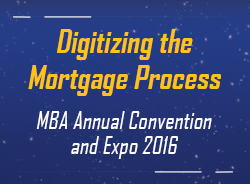 We're excited to attend the upcoming
We're excited to attend the upcoming 